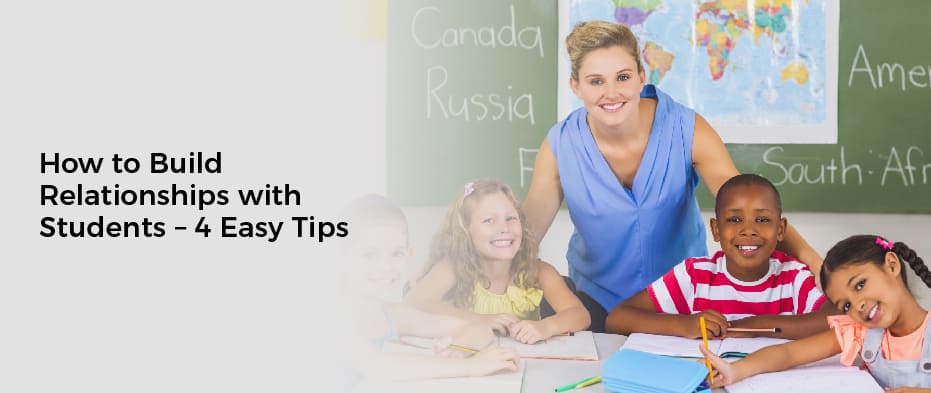
How to Build Relationships with Students – 4 Easy Tips
Table of Contents
How to build relationships with students: Building relationships with students is an important part of being a teacher or educator. You can take many different approaches to develop and nurture these relationships; the key is finding what works best for you and your students.
One approach that has been shown to be effective is to create an open and welcoming classroom environment. This might mean having a positive, friendly tone in your interactions with students and setting clear expectations. It may also involve getting to know your students personally by interacting with them outside of class and trying to learn about their interests and hobbies.
How to Build Relationships with Students
1. Spend On Time With Students
There is a possibility that the first one may seem too simple or even include it. However, I still believe that saying hi to your students daily is very important. The most common mistake we make is to forget that our kids are human, have emotions, and go through things every day.
I think it is important to acknowledge your students every time they walk into your room. By standing at the door, I can let them know that you see them, that they matter, and that they have a presence in the classroom. Greetings to the student as he walks in.
Good Morning, Good Afternoon, and how was your day? The way I greet my students every time they leave the room is something that even meets my students to tell them how important it is to me. If you don’t have the opportunity to greet every one of them as they are doing, make it a daily practice.
Perhaps they are working on an activity, or you can see sir john around the room like hey john. I hope you’re doing well. Hey Jessica, how’s it going? Just acknowledge them for a moment, so they know they are important.
2. Attend Competition with Student
The second way that I like to create a positive relationship is to attend after-school activities. We should be involved in so many things our students are involved in.
There is a world outside your classroom where your students live. Talk to them about their interests and extracurricular activities that they participate in. Regardless of whether you share their passion, take an interest in their interests. Attend a few ball games or extracurricular activities to show your support. Encourage your students to take their passions and interests and turn them into a career.
There are academic activities at my school, whether it’s sports games after school, talent shows, or theater plays. Our students are eager to participate in Latin competitions or math competitions, and it’s great to build a relationship with them as well.
3. Build Relationships with Students by Share Interesting Stories
A third aspect that is very important to them is sharing stories. It is easy to forget that the classroom should be fun, not stuffy and rigid. Students find stories about former students especially intriguing. When they hear about students who sit at the same desks as them, they get very excited.
Symbolism and allusion are hard literary concepts to understand, so teach students to understand them through personal stories. The horror stories I tell about prom night make my students laugh and help them relate to me better.
The best stories make children want to go ahead and do things. My teacher friend Jacklin once took a test nine times before passing it. When she shares that story with her students, they learn that challenges are just part of the journey.
4. Encouraged their Efforts
Our students think they are incapable of learning, who think they are not good at math, and we also have many students who believe they are not good at social studies. Those are all stigmas.
Our job as educators is to erase the notion that every student can learn and improve. It is a growth mindset we must instill in our children.
Any little encouragement you can give it while you’re walking around the classroom and you read a great answer on a piece of paper, tell them, ” Oh, that was good.
I would like you to share that with the classroom when you read at home and you grade, write little notes to your students. I noticed your writing has improved, and you were very intentional in your punctuation and vocabulary. Just give them credit for their effort, so they know how much they have contributed.
Conclusion
An important part of building relationships with students is fostering trust and collaboration. This might involve encouraging your students to work together on group assignments and initiatives or providing opportunities for them to share their ideas and opinions in class discussions. Additionally, it can be helpful to offer positive feedback and support when students take risks or struggle with challenging concepts.
You can take many approaches to build strong relationships with your students. Creating a supportive and inclusive classroom environment, fostering trust and collaboration, and being intentional in your interactions with students can help build meaningful and enduring connections that will benefit you and your students.